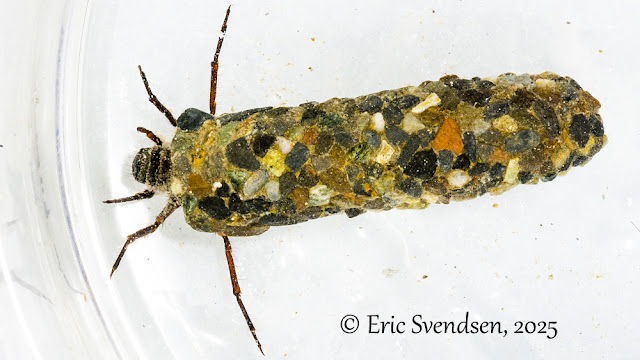Golden-winged long-horned caddisfly adult in Cypress Hills, Alberta
You would think that being found across southern Canada and the Northern US that I could find a picture of this creature in one of my insect field guides. It is the first of its kind I have seen, and I was pretty sure it was a caddisfly adult when I discovered it sitting on a wind-blown leaf.
The young caddisflies are omnivorous, feeding on aquatic plants, detritus, and invertebrates much smaller than itself. As a larva, it uses sand grains to build a case which encloses it. The gills are kept lower down inside the case and presumably encourage water to move past the to allow gas exchange. They live in water with some degree of flow, usually streams, which no doubt helps with the movement of water past the protected gills. The photo below is of a different species of caddisfly but with a similarly constructed case.
 |
| Caddisfly larva in its portable case. Not the same species as above. |
Adept fly fishermen will tie flies looking like various insects, the golden-winged long-horned caddisfly among them. One of the key aspects of fly fishing is to find out what aquatic insects are emerging from the hatch (when aquatic larvae pupate and emerge from the water as winged adults). These caddisflies typically emerge in early summer.
Thanks for reading.
Eric Svendsen www.ericspix.com




Comments
Post a Comment